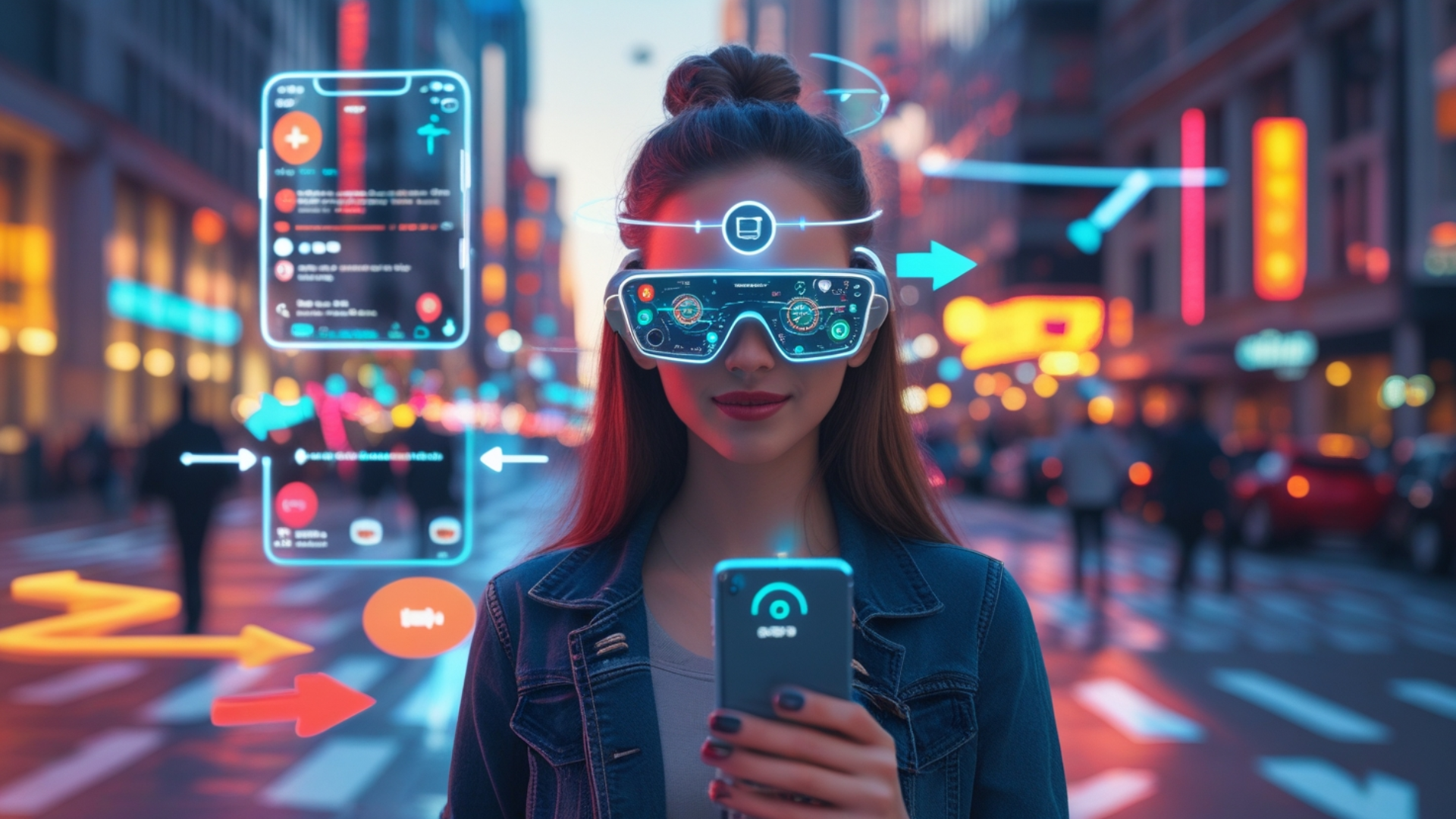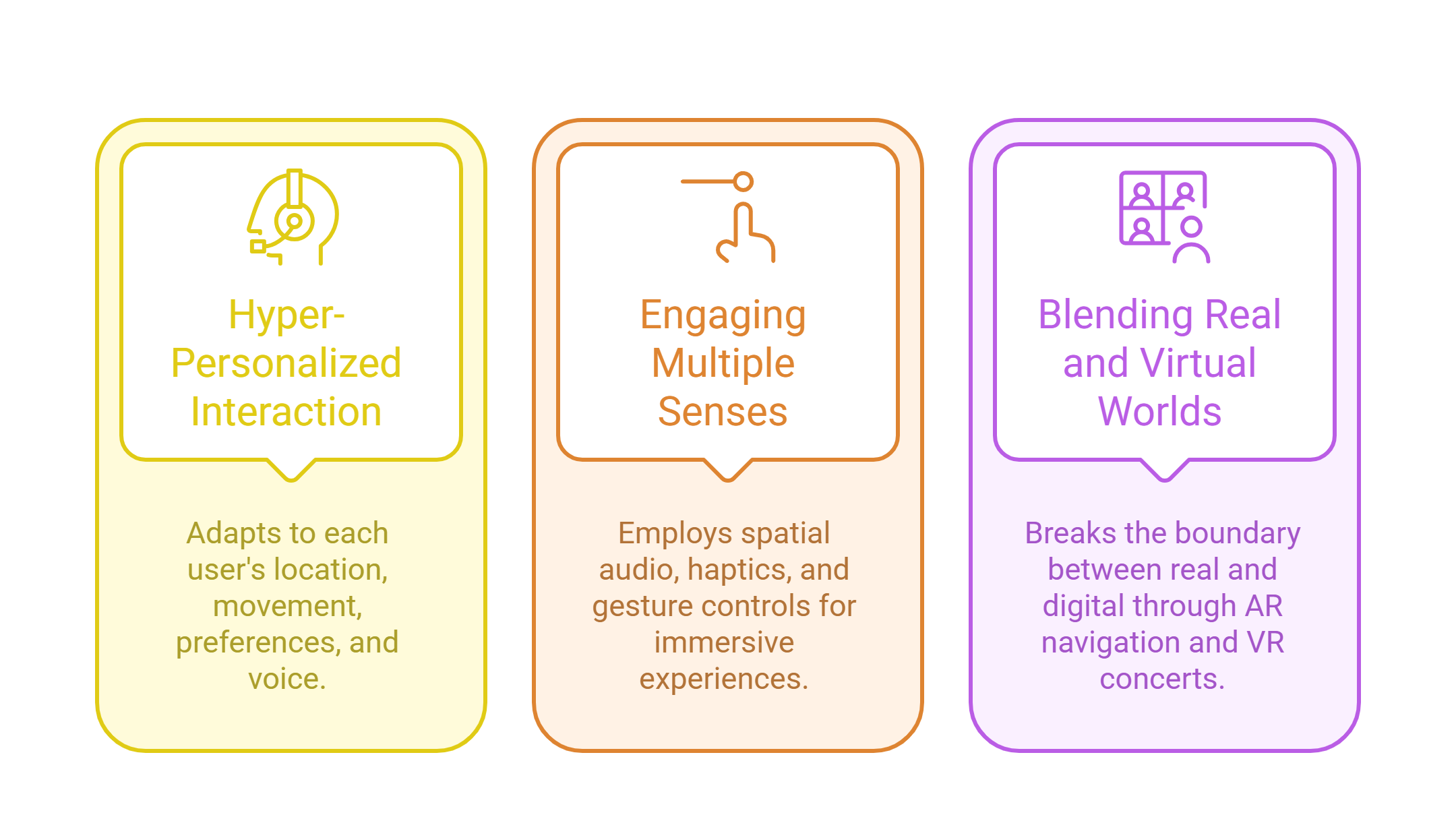
AR/VR in Mobile Apps has revolutionized the user experience in ways that seemed impossible just a decade ago. As mobile technology advances, every industry is discovering how AR/VR in Mobile Apps can transform engagement, learning, entertainment, and even health. In this comprehensive guide, you’ll explore the deepest levels of how these immersive technologies are built, how they change user behavior, and how your app can stand out in 2025 and beyond.
Why AR/VR in Mobile Apps Matter More Than Ever
Mobile devices are no longer just screens in our pockets. Increasingly, they are portals blending physical and digital worlds. Through powerful sensors, vivid screens, and steady connectivity, these technologies now delivers not only information—but genuine experiences—directly into people’s everyday lives.
Furthermore, the competition to grab and hold user attention is fierce. Because of this, immersive technologies are no longer a luxury—they’re a necessity for brands and developers who want to outpace their rivals and keep audiences engaged.
The Technology Foundations
Cutting-Edge Hardware
Every major smartphone in 2025 comes loaded with multi-lens cameras, sensors, and advanced chips. As a result, AR/VR in Mobile Apps can detect their surroundings, calculate depth, and render effects in real time. Device upgrades—like LiDAR—make overlays lifelike and stable, while batteries last longer than ever before.
Cross-Platform Software and SDKs
Thanks to frameworks like ARCore, ARKit, and Unity, AR/VR in Mobile Apps can be created once and launched across Android and iOS. Besides saving time and effort, this allows developers to deliver consistent immersive experiences to the entire user base.
The Role of Cloud and Edge Computing
Performance bottlenecks are less of a barrier today. Cloud rendering allows complex scenes to be processed instantly and wirelessly, ensuring smooth AR/VR in Mobile Apps runs even on mid-range devices. In addition, edge computing ensures low latency, a must for real-time interactions.
How AR/VR in Mobile Apps Create Immersive User Experiences

Hyper-Personalized Interaction
Unlike old-fashioned apps where everyone got the same experience, AR/VR in Mobile Apps learn from and adapt to each user. By leveraging location, movement, preferences, and voice, the app becomes a personalized guide or companion, rather than just a tool.
Engaging Multiple Senses
More than just visuals, AR/VR in Mobile Apps employ spatial audio, haptics, and gesture controls. For instance, a virtual museum app not only shows 3D artifacts but lets users “pick them up,” listen to ancient histories, and feel subtle vibrations when interacting with fragile objects.
Blending Real and Virtual Worlds
One of the most significant impacts of AR/VR in Mobile Apps is in breaking the boundary between what’s real and what’s digital. AR navigation draws animated arrows on actual sidewalks. VR concert apps let fans “reach out” to their favorite artist. In both cases, the experience feels magical—yet practical.
AR/VR in Mobile Apps Across Major Industries
Retail & Commerce
AR/VR in Mobile Apps have changed shopping forever. For example:
- Customers visualize furniture or décor in their home before purchase.
- Virtual try-ons give shoppers confidence that their new shoes or glasses are the perfect fit.
- Interactive, location-based promotions appear as users move through malls.
Healthcare
The benefits of AR/VR in Mobile Apps go far beyond entertainment in the medical field:
- AR overlays guide doctors through surgery, showing veins and organs in real time.
- VR simulations help therapists expose patients gently to phobias, or guide remote rehab.
- Medical students practice rare procedures in safe, repeatable virtual environments.
Education
Educators and learners alike have embraced AR/VR in Mobile Apps to transform lessons into journeys:
- Textbooks come alive in 3D when a camera is pointed at illustrations.
- VR field trips enable students in any country to “walk” inside the Pyramids or observe marine biology on the ocean floor.
- Real-time feedback and gamification make learning stickier and more collaborative.
Real Estate & Architecture
AR/VR in Mobile Apps gives buyers and sellers tools that seemed like science fiction just years ago:
- Virtual tours allow homebuyers to explore dozens of properties in a single afternoon.
- Augmented planning overlays new designs, walls, or landscaping onto existing buildings.
- Clients can leave notes and make changes collaboratively from afar, cutting project time and costs.
Travel & Tourism
With AR/VR in Mobile Apps, travelers get the power to:
- Scan monuments or street signs and access instant historical insights.
- Preview hotel rooms and resort amenities in immersive VR before booking.
- Follow AR city guides that overlay directions, reviews, and cultural tips live as they walk.
Entertainment & Social Connection
Finally, AR/VR in Mobile Apps redefine fun and friendship:
- Games overlay new worlds onto city parks or neighborhoods.
- Friends meet as avatars for movie nights, concerts, or games—even from different continents.
Case Study: Transforming Language Learning with AR/VR in Mobile Apps
A leading mobile education app sought to overhaul its traditional flashcard system. Accordingly, it launched an AR/VR-driven experience where:
- Users could point their phone at any object and instantly see translations, definitions, and example sentences.
- In VR mode, students entered virtual marketplaces, practiced with native speakers, and role-played real-life situations (like ordering at a restaurant).
- Gamification elements, like earning badges for pronunciation or “unlocking” historical stories, tripled time spent in-app.
As a result, user engagement increased by 60%, in-app purchases grew, and retention rates broke all previous records.
Implementing AR/VR in Mobile Apps: Best Practices & Practical Advice
Start with Value
Firstly, remember to ask, “What user problem or desire does this immersive feature address?” Focus on elements that genuinely enhance experience—not just what’s trendy.
Prioritize Accessibility
Inclusion is vital. Offer voice navigation, colorblind-friendly visuals, adjustable font sizes, and motion settings for those sensitive to intense AR/VR effects. Let users switch off immersion if they’re in a hurry or have a device that struggles with high-end graphics.
Design for Comfort
Avoid visual clutter. Use clear, consistent gestures and keep interface elements at a comfortable distance. Furthermore, always offer easy exits, pauses, or breaks, especially in VR.
Optimize for Performance
Test repeatedly across many devices. Compress assets, optimize code, and use cloud/edge support for demanding scenes. Because of this, users will have a smooth experience, regardless of device generation.
Focus on Privacy
Always ask before turning on the camera, microphone, or tracking features. Only collect the minimum data needed, store it securely, and be transparent about how it’s used.
Educate and Onboard
Don’t assume all users are familiar with AR/VR. Guided tours, helpful tooltips, and short demo videos reduce the learning curve.
Overcoming Common Challenges in AR/VR Mobile App Development
Although AR/VR in Mobile Apps has become mainstream, challenges persist:
- Battery Drain: Minimize always-on features and prefer efficient code. Explain the app’s power needs honestly to users.
- Device Fragmentation: Offer low-resource “lite” modes or fallbacks for older devices.
- Motion Sickness in VR: Allow users to customize movement or teleport, and insert regular breaks for extended sessions.
- User Privacy Concerns: Use highly visible, plain-language privacy policies and controls.
Steps for AR/VR Success in Your Mobile App
Step 1: Research Your Users
Analyze what motivates and frustrates your core audience. Interview users, run surveys, and study competitors’ AR/VR features to guide your own strategy.
Step 2: Prototype Quickly
Create basic wireframes and AR/VR scenes using frameworks like Unity. Test with real users as soon as possible to gather feedback.
Step 3: Iterate Based on Insights
Even small changes (such as adjusting object brightness for outdoor use) can dramatically improve usability and enjoyment.
Step 4: Launch and Learn
After release, measure engagement and retention. Use analytics and reviews to uncover what works and where users drop off, then refine features accordingly.
The Future: What’s Next for AR/VR in Mobile Apps?
Beyond 2025, AR/VR in Mobile Apps will be even more immersive. As devices become lighter, cheaper, and more connected, expect:
- AR glasses replacing many phone-based overlays, freeing hands for more natural interaction.
- Multi-user AR/VR experiences in real-time for gaming, events, and teamwork.
- AI-powered AR that “understands” the world—automatically labeling objects, translating conversations, or offering real-time problem-solving.
Moreover, as standards and security practices mature, more sensitive domains (like banking or personal wellness) will adopt AR/VR, thanks to new trust.
Conclusion: AR/VR in Mobile Apps Is Just Getting Started
AR/VR in Mobile Apps is no longer a vision of the future—it’s today’s most dynamic tool for building unforgettable user experiences. By anchoring development in real user needs, inclusive design, and responsible data practice, every team can create world-class immersive apps. Those who start this journey now will define how millions see, interact with, and shape their digital and real environments for years to come.
Frequently Asked Questions
1. What is the main advantage of AR/VR in Mobile Apps?
The main advantage lies in transforming passive interactions into interactive, memorable experiences—making learning, shopping, playing, or working more engaging and effective.
2. Do AR/VR in Mobile Apps require expensive devices?
Not anymore. Most current smartphones support AR out of the box, and affordable VR viewers are widely available.
3. How do developers ensure privacy with AR/VR features?
By being transparent about data use, asking for camera or mic access only when needed, and providing robust privacy settings.
4. Does AR/VR make apps more addictive or increase screen time?
Immersive features tend to increase engagement, but responsible design should promote healthy session lengths and digital balance.
5. Can any industry benefit from AR/VR in Mobile Apps?
Yes. From tourism and education to logistics and home improvement, nearly every sector discovers unique wins with immersive technology.

